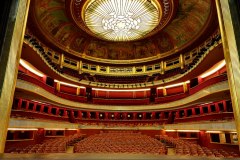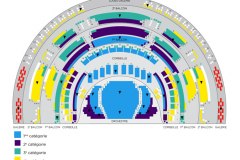Le Comte Ory
November 2024 | ||||||
|---|---|---|---|---|---|---|
Mo | Tu | We | Th | Fr | Sa | Su |
Premiered at the Académie royale de musique (Opéra de Paris) on 20 August 1828, Le Comte Ory, the musician’s penultimate opera, is a very atypical work. In 1828, Rossini, who had been living in Paris since 1824, was 36 years old and had already amassed an impressive catalogue of 34 operas. He was the most famous composer in Europe at that time. The work is frivolous and occasionally comic, yet musically subtle and refined. The libretto, written in part by Eugène Scribe, is inspired by an 1817 vaudeville based on an eleventh-century Picard romance recounting how the libertine Comte Ory hatched a plan to sneak into a convent and seduce the abbess while his knights turn their attentions to the nuns. But things do not go to plan. In musical terms, Rossini successfully uses recycled material (certain elements from Le Voyage à Reims) and assimilates the French style. This is an ironic but subtle Rossini, who will be ably championed by Cyrille Dubois.
Coproduction Les Grandes Voix | Théâtre des Champs-Elysées
Synopsis
Time: Circa 1200, during the Crusades
Place: Touraine
Act 1
The countryside before the castle of Formoutiers
Scenes 1–3
The lords and men of Formoutiers have been away on a crusade. Count Ory, who hopes to seduce Countess Adèle, takes advantage of the situation. Hoping to win her hand, he disguises himself as a hermit, aided by Raimbaud, his friend. Raimbaud announces that a wise hermit will visit the village to offer advice on matters of the heart. The castle is filled with women awaiting their husbands' and brothers' return from the crusades. Ragonde discloses that the countess hopes to have the hermit ease her sadness and Raimbaud assures her that the hermit's skill is unparalleled and has helped many widows find love.
The count Ory, disguised as a hermit, arrives at the castle. The people tell him their wishes and he invites the young ladies to visit him at his hermitage that evening. Ragonde explains that the ladies have sworn to live like widows in the countess's castle while their husbands and brothers are away on the crusade. She tells the disguised Ory that Countess Adèle wishes to speak with him to which he enthusiastically agrees. Ory retires to the hermitage with the women.
Scenes 4–6
Ory's page Isolier and the tutor arrive on the scene, resting from their journey in the shade. They explain that the count Ory, who is under the tutor's care, has disappeared. The tutor explains that he is searching for Ory at the behest of Ory's father ("Veiller sans cesse"). When the tutor asks why the page brought him to this place, it is revealed that Isolier wishes to visit the countess's castle.
The ladies and other peasants exit the hermitage. When the tutor sees the pretty girls, he suspects the count is near. The women tell him the hermit came to town eight days ago – the same day the count disappeared from the tutor's watch. His suspicions deepen.
Scene 7
Isolier is in love with the countess. He doesn't recognize Ory in disguise, and Isolier confides his love to the hermit, explaining his plan to sneak into the castle disguised as a female pilgrim (Duet: "Une dame de haut parage"). Isolier asks for the hermit's help: when the countess comes to him for advice, he should tell her that her torment is caused by her indifference and that the cure is to love Isolier. Ory likes this idea, but he is resolved to use it for his own ends.
Scene 8
Countess Adèle consults the hermit about a cure for her melancholia ("En proie à la tristesse"). He proposes that she fall in love, which she promptly does, with Isolier. The "hermit" warns her not to trust "the faithful page of the terrible Count Ory" and she leads him to the castle.
Scene 9
The tutor recognizes Raimbaud and Ory and everyone is shocked when the count's identity is revealed. Adèle receives a letter from her brother announcing that the crusade is over and the men will return to their homeland within two days.
Act 2
A large room in the castle
Scenes 1–4
A terrible storm persuades the countess and her attendants to welcome a group of fourteen pilgrims surprised by the elements. These pilgrims are actually Ory and his men in disguise. Ory's new disguise is as "Sister Colette". Left alone with the countess, Ory passionately approaches her (Duet: "Ah! quel respect, Madame").
Scenes 5–8
Served only milk and fruit for dinner, the "pilgrims" note the lack of wine. Raimbaud to the rescue – he has broken into the castle wine cellar and returns with enough for everyone. They toast the countess's absent brother ("Dans ce lieu solitaire"). Ragonde enters to check on them and they pretend to pray, hiding the bottles. She returns with the countess, who praises them for their piety.
Scene 9
Isolier arrives at the castle to let the women know that their husbands and brothers will be arriving at midnight. Upon hearing that the ladies have welcomed a group of pilgrims into the castle, Isolier recognizes that it is Ory and his men. He shares this revelation with the women, who are afraid of what their husbands will think upon finding them in a castle with fourteen men.
Scene 10–11
After everyone is in bed, Ory enters Countess Adèle's room. He woos her, not realizing in the dark that it is Isolier's hand he is holding (Trio: "À la faveur de cette nuit obscure").
The men return from the crusade. Isolier reveals himself to count Ory and helps him and his men escape from the castle.
Program and cast
Sung in French, with French subtitles
Running time approx. 2h50
Cyrille Dubois | Count Ory
Sara Blanch | Countess Adèle
Ambroisine Bré | Isolier
Monica Bacelli | Ragonde
Nicola Ulivieri | Tutor
Sergio Villegas-Galvain | Raimbaud
Marielou Jacquard | Alice
Patrick Lange | direction
Orchestre de chambre de Paris
Chœur de Chambre de Rouen | direction Frédéric Pineau
Théâtre des Champs-Élysées
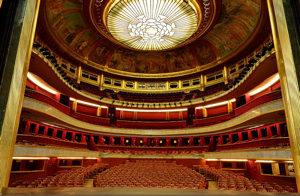
The Théâtre des Champs- Elysées is undoubtedly one of the finest venues in Paris . Built in 1913 , it has the distinction of having been designed by a group of artists architects Henry Van de Velde and Auguste Perret , the painter and sculptor Antoine Bourdelle , the painter Maurice Denis , and the crystal- René Lalique to do mention the main ones . He was the first Parisian theater to be built entirely of reinforced concrete.
Restoration of the Great Hall devoted to operatic performances , symphony concerts and dance was decided in 1985. Two years later , on 23 September 1987, the theater reopened its doors , completely renovated. Fifteen years after this important work it was decided to undertake a new renovation campaign , but to prevent the complete closure of the theater for an entire season , work is now carried by step during the summer . Then it is to replace aging equipment , to remedy wear certain parts of the theater and improve spectator comfort and artists during their visit . Thus in recent years, including the work involved the renovation of marble facade, replacing the carpet in the room with wooden floors , installation of a new fully decorated wooden concert to a significant improvement of acoustics, the orchestra pit and stage below .
The Théâtre des Champs- Elysées is now a modern working tool receiving each year nearly 300,000 spectators and a few thousands of artists and collaborators.
The Théâtre des Champs- Elysées , the jewel of French architecture of the twentieth century, was in 1953 one of the first buildings of contemporary architectural heritage to be classified as historic monuments . Since 1970 the Caisse des Dépôts owns the entire building 15 avenue Montaigne and principal patron of the theater.
For over a century, Théâtre des Champs-Elysées has been the place where the most celebrated artists have come to make their names in Paris. The world’s finest orchestras and world-class soloists have always been a fixture at the Theatre. Théâtre des Champs-Elysées presents more than 200 concerts each year and is renowned for its outstanding performances of all genres, from classical music concerts and staged opera to contemporary dance and jazz.
How to reach us:
Subway: Alma-Marceau (line 9), Franklin D.Roosevelt (line 1), Pont de l’Alma (RER line C)
Bus: n° 42, 63, 72, 80, 92
Taxi station: Place de l’Alma, corner of avenue George V
Car park: Alma George V. The entrance is in front of n° 19, avenue George V
Fixed rate depending on the length of the performance. Payment upon entering.
Performances: Mo 08 Jul 2024,
Performances: Fr 12 Jul 2024,
Performances: Su 07 Jul 2024,
Performances: Su 07 Jul 2024,
Performances: Su 07 Jul 2024,
Performances: Fr 20 Dec 2024,

 EN
EN DE
DE IT
IT FR
FR ES
ES RU
RU JP
JP RO
RO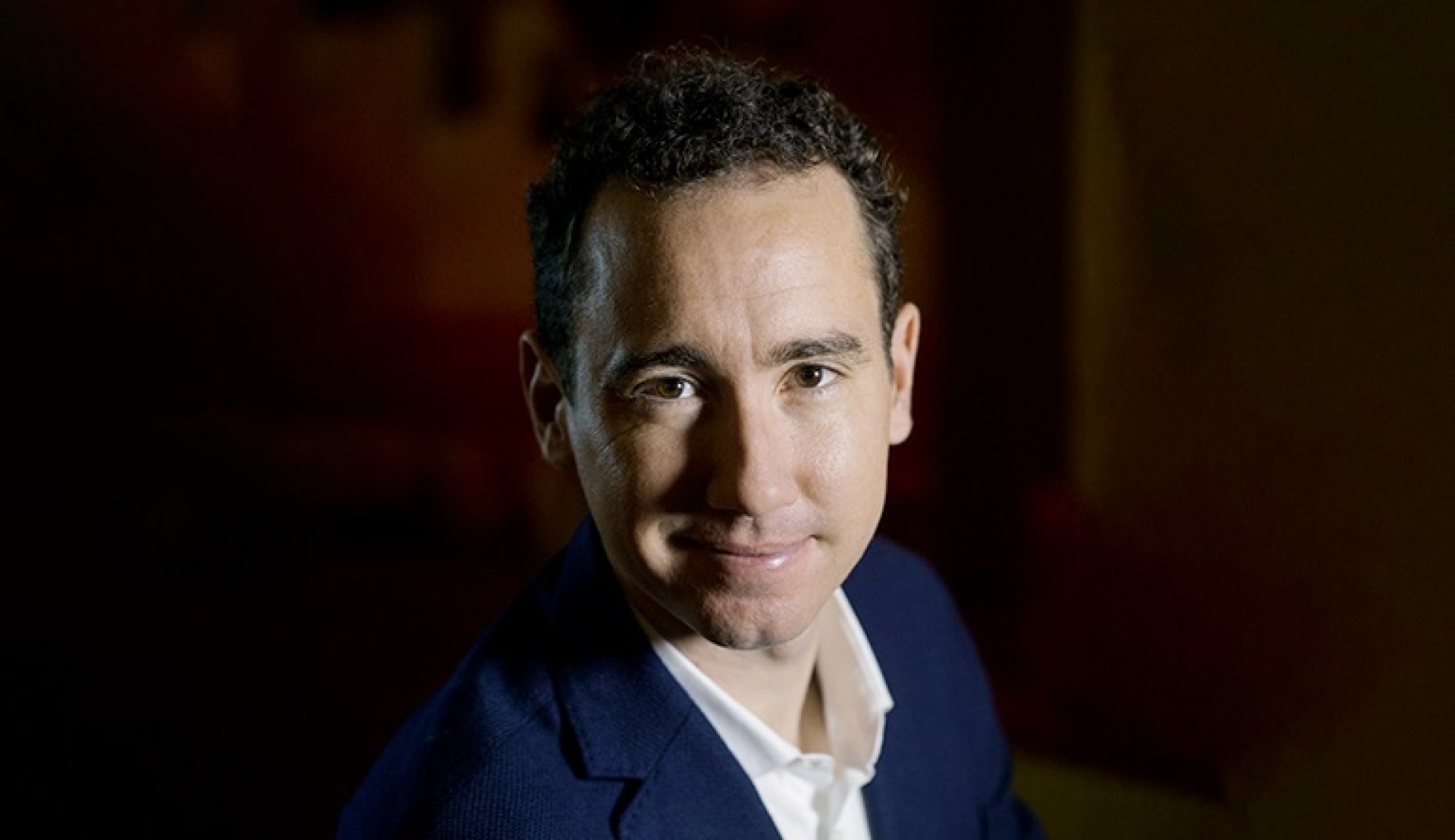
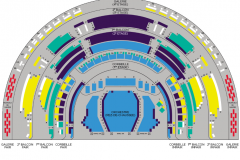 Seating plan
Seating plan 